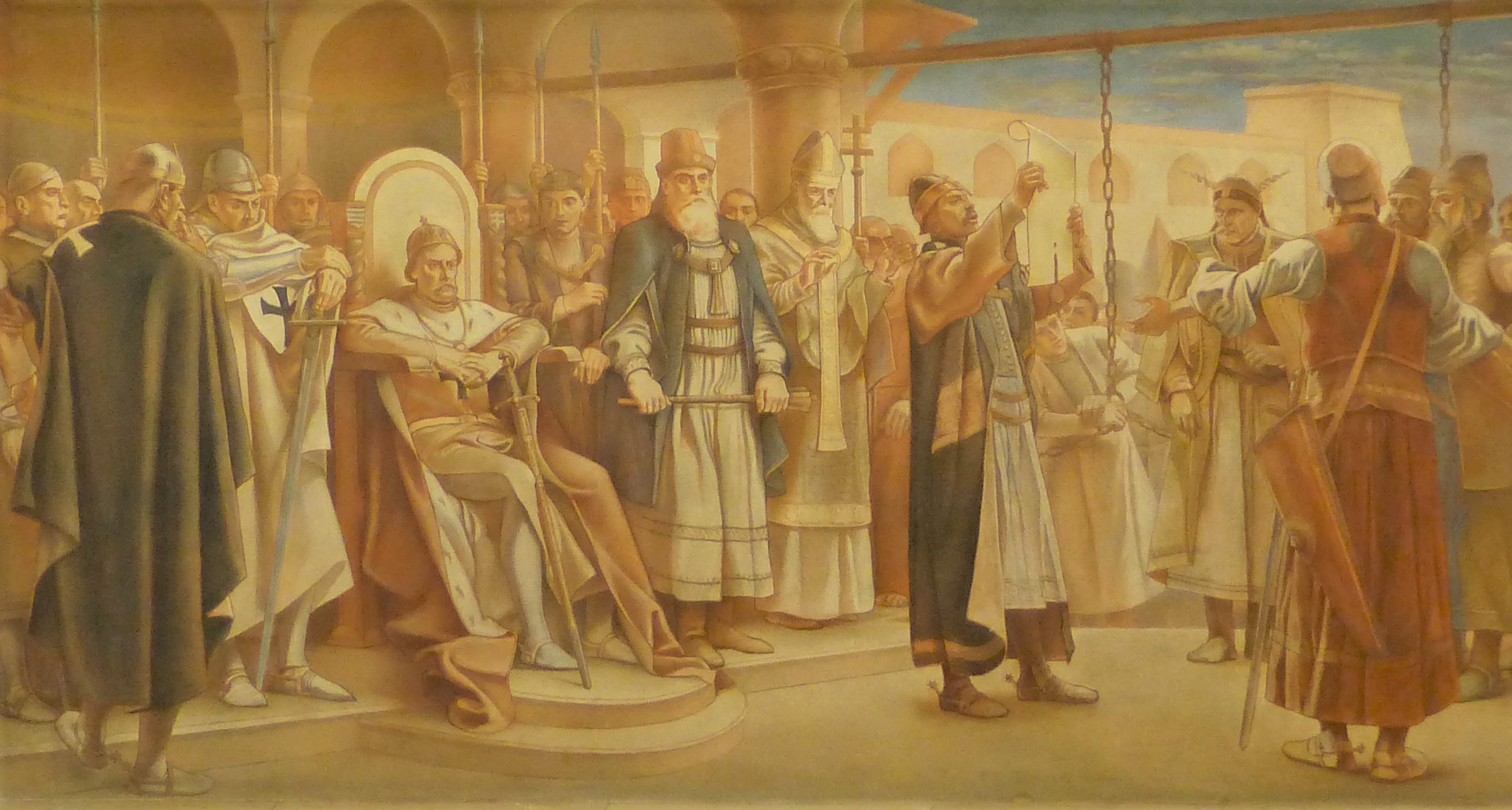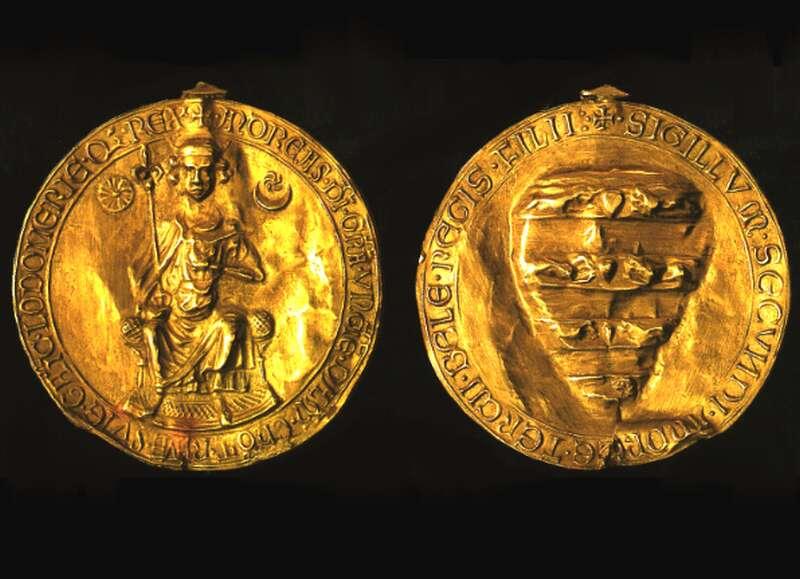Each document has its own video explaining the origins of the documents, its historical background, and importance.Continue reading

Promulgated by Andrew II of Hungary 800 years ago, the Golden Bull is perhaps the most widely-known medieval Hungarian document in the world. The release of the charter, which historians regard as a milestone in Hungarian history, marks arguably one of the most important reference points in the development of Hungarian law and society. The edict established the rights of the nobility and was among the first examples of constitutional limits being placed on the powers of a European monarch. The significance of the Golden Bull is shown by the fact that it has often been compared to the Magna Carta (1215) which is considered the basis of English constitutionalism.
The Golden Bull was issued by Andrew II on April 24, 1222 at the Diet of Székesfehérvár. The historic importance of the document lies in the fact that it set down the principles of equality for the nation’s nobility.
Considered the first constitutional document of the Hungarian nation, it has been often compared to the first constitutional charter of the nation of England, the Magna Carta, which was released only seven years prior to the Golden Bull.

The golden seal that earned the decree the name. Photo via mek.oszk.hu
The Hungarian document compelled the king to convoke the Diet regularly, forbade him to imprison a noble without a lawful court order, and denied the king the right to tax estates belonging to nobles and the church. It released the nobles from required service without pay in the king’s army abroad and also prohibited foreigners from owning landed estates (without the Royal Council’s approval) and public positions. It also prohibited the simultaneous holding of multiple positions.
Eleven articles of the Golden Bull dealt with the grievances of the royal servants, freemen who owed military service to the king. It clearly distinguished them from the king’s other subjects, thereby establishing the rights of the Hungarian nobility.
The charter also increased nobles’ authority in the counties; the king’s county officials (Hungarian: ispán, Latin: comes) could be dismissed for misconduct, and their positions could not be inherited.
Furthermore, as perhaps its most important provision, the document’s closing, the so-called ’resistance clause’ states that if the king or his successors violated the provisions of the charter, the nobles and bishops had the right to resist (jus resistendi) and contradict the king without being subject to punishment for treason.
To this day, the historical notion persists that the king’s wasteful and costly policies, such as the extensive donation of state-owned estates and offices, generated serious resistance among the Hungarian nobility.
Tensions were further exacerbated by Andrew’s expensive military campaigns, which gave rise to resistance movements and rebellions. At the height of this, in 1222, a palace revolution broke out, during which the nobles forced him to promulgate the Golden Bull, and reorganize the Royal council.
Recent studies, however, refute this theory, concluding that the monarch was in fact determined to create a new structure of power centered on reducing the rights of the increasingly unreliable county officials (ispán), and placing those who the king found more trustworthy to his government in key positions, this way strengthening the central royal power.
From this point of view, the motive behind the issuing of the Golden Bull was therefore not primarily to satisfy the demands of the rebelling nobles, but to pursue the king’s very own interests – which were in line with the establishment of certain noble rights. Many historians argue that this is confirmed by the fact that almost all the articles of the charter were created for the benefit of the monarch. It is therefore probable that the document was issued by Andrew II of his own free will and not under political pressure.
Although the clauses of the Golden Bull could not be fully enforced on the Hungarian rulers, its promulgation can nevertheless be considered one of the most important milestones in the evolution of Hungarian constitutional law. The document’s repeated renewal over the centuries had a lasting impact on the foundations of later legislation and Hungarian parliamentarism itself.
Andrew II reissued the document in 1231, with some changes, and later, in 1267, so did King Béla IV.
The Golden Bull’s fate reached a major turning point in 1351 when King Louis the Great (I. Nagy Lajos) included it in his own law of that year. The document, which by that time had been falling into the background, was thus revived.
From then on, the tradition of Hungarian kings revising and confirming the Golden Bull on the occasion of important events had begun. According to some historical sources, all the Hungarian kings of the late Middle Ages swore an oath to uphold the Golden Bull at their coronation ceremony. In later centuries, the decree formed an integral basis of Hungarian customary law.

Members of the Constitutional Court wearing medals with the seal of the Golden Bull. (2017) Photo via the official website of the Constitutional Court
The symbolic significance of the charter extends to the present day, as an exact replica of the royal seal of the Golden Bull hangs around the necks of the members of the Hungarian Constitutional Court.
Featured image: Andrew II promulgates the Golden Bull, painting by Mátyás Jantyik